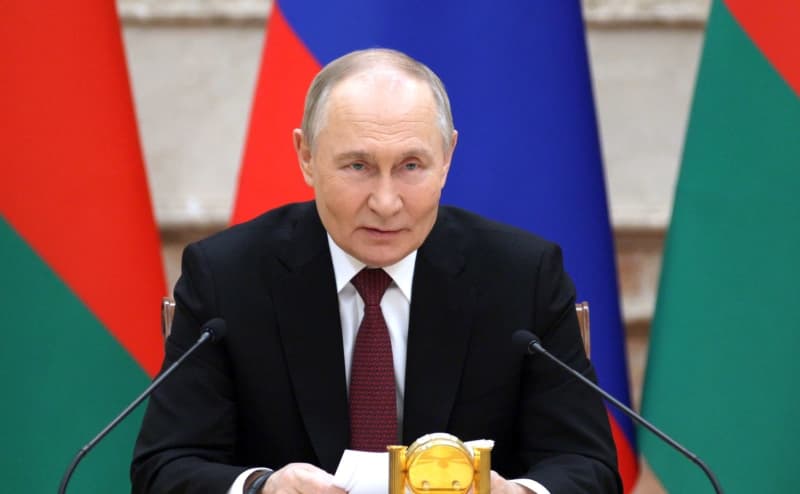Russian President Vladimir Putin is set to conduct his annual end-of-year press conference and televised call-in show on Thursday, an event that serves as a platform for interaction between the president and both journalists and citizens. This year’s session comes with a notable twist: it will combine the traditional question-and-answer format with the television program “Results of the Year.” This merger began in 2020 and became a permanent arrangement in 2023, a decision attributed to the president’s increasingly limited time, as stated by Kremlin spokesman Dmitry Peskov. The event is scheduled to commence at noon local time (0900 GMT) and is expected to last for several hours, allowing for an extensive range of questions.
The response to the call-in show has been significant, with state news agency TASS reporting that over 1 million questions have already been submitted to the president. While this figure indicates strong public engagement, it has yet to surpass the previous year’s tally of 1.5 million questions. Many of the inquiries revolve around topical issues, predominantly the “special military operation” in Ukraine—a terminology the Kremlin uses to refer to its invasion—as well as concerns related to health care. The combination of these two critical topics reflects the prevailing sentiment and urgent issues facing the Russian populace.
Moreover, recurring themes in the questions submitted encompass issues of poverty and social hardship, with many citizens voicing their concerns about the healthcare system and inadequate infrastructure. These topics are critical as they hint at broader societal challenges that the country is grappling with, especially amidst ongoing economic strains linked to the conflict in Ukraine. The press conference serves as an opportunity for Putin to present himself as a leader who actively addresses these pressing issues, aiming to highlight his government’s responsiveness and problem-solving capabilities.
As Putin prepares for this high-profile event, it bears noting that he did not hold the press conference in 2022 due to the upheaval caused by Russia’s full-scale invasion of Ukraine. This absence marked a departure from a long-standing tradition and raised questions about the government’s communication strategy during periods of significant national crisis. The return of the press conference in 2023 signals an effort to reconnect with the public while also seeking to manage perceptions surrounding the current state of the nation.
Throughout the years, these annual events have allowed citizens to directly voice their concerns to the president, positioning him as an approachable figure in a controlled setting. However, the questions often go through a vetting process that can limit the nature of the discourse. This arrangement raises discussions about the effectiveness of such formats in genuinely addressing the widespread discontent among the population. As Putin showcases his solutions to the highlighted problems, critics might view the exercise as more of a staged performance rather than a sincere engagement with the people’s needs.
Overall, the upcoming end-of-year press conference presents an interesting lens through which to examine the current state of Russian politics and society. It reflects not only Putin’s approach to governance during tumultuous times but also the challenges that continue to resonate with the Russian populace. As citizens prepare their questions, it will be crucial to observe how the president responds to the various pressing issues, especially considering the context of ongoing geopolitical tensions and domestic frustrations.

